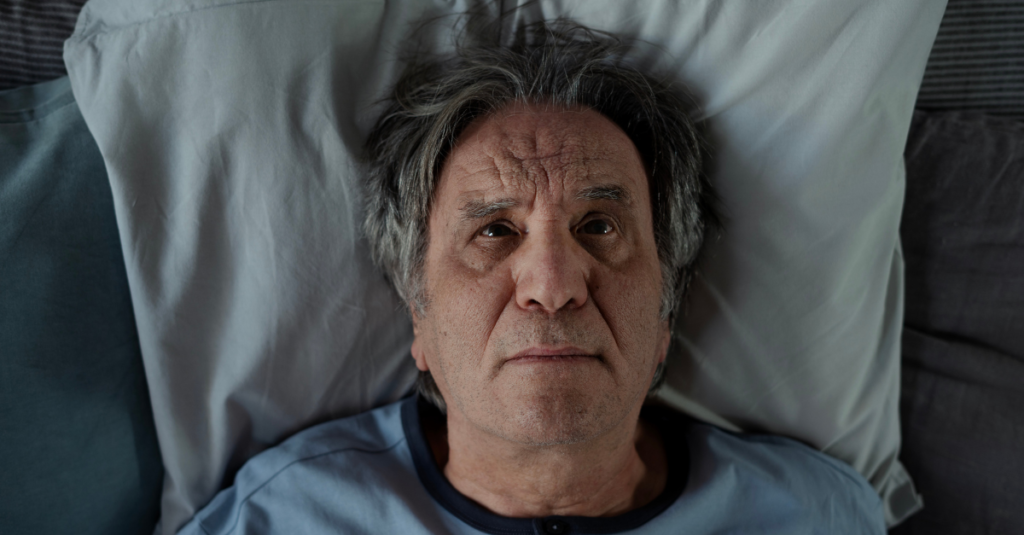As men age, maintaining good prostate health becomes increasingly important, especially for those over 55. The risk of developing prostate-related issues, such as benign prostatic hyperplasia (BPH), prostatitis, and prostate cancer, increases with age. Since prostate health can significantly impact quality of life, including urinary function and sexual health, it’s essential for aging men to understand how to care for their prostate and take preventive measures. In this article, a urologist provides expert insights on the importance of prostate health, regular screenings, and effective cancer prevention strategies for men over 55.
Understanding Prostate Health

What is the Prostate?
The prostate is a small, walnut-sized gland located just below the bladder and in front of the rectum. It surrounds the urethra, the tube through which urine passes from the bladder out of the body. Its primary role is to produce seminal fluid, a component of semen that nourishes and transports sperm. While small in size, the prostate plays a vital role in male reproductive health, and changes in this gland can significantly affect both urinary and sexual function.
Age-Related Changes in the Prostate
As men age, the prostate naturally grows larger, which can sometimes lead to a range of health issues. The most common conditions include:
- Benign prostatic hyperplasia (BPH): A non-cancerous enlargement of the prostate that can compress the urethra and lead to urinary problems.
- Prostatitis: Inflammation of the prostate that can cause pain and discomfort.
- Prostate cancer: The most common cancer among men, particularly those over 55.
Understanding these natural changes helps aging men identify symptoms early and take preventive steps to maintain their prostate health. Early detection and proper management can significantly improve quality of life and prevent more serious complications.
Common Prostate Health Issues

1. Benign Prostatic Hyperplasia (BPH)
BPH is a condition where the prostate gland enlarges, often leading to uncomfortable urinary symptoms. As the prostate grows, it can press against the urethra, causing a partial blockage that affects the flow of urine. Symptoms of BPH include:
- Difficulty starting urination
- A weak urine stream
- Frequent urination, particularly at night (nocturia)
- A feeling that the bladder is not completely empty
While BPH is not cancerous, it can significantly impact daily life if left untreated. Common treatments include:
- Medications: Drugs like alpha-blockers can relax the muscles around the bladder neck, improving urine flow. Other medications, such as 5-alpha-reductase inhibitors, can shrink the prostate.
- Lifestyle changes: Reducing fluid intake before bedtime, limiting caffeine, and managing bladder habits can help ease symptoms.
- Surgery: In more severe cases, surgical procedures like transurethral resection of the prostate (TURP) can be used to remove part of the enlarged prostate.
2. Prostatitis
Prostatitis is the inflammation of the prostate gland, which can either be acute (sudden and severe) or chronic (persistent). Symptoms often include:
- Pain in the pelvic area, lower back, or genitals
- Difficulty urinating, including pain or burning during urination
- Pain during ejaculation or sexual activity
- General discomfort, such as flu-like symptoms with acute prostatitis
Treatment depends on the cause of prostatitis:
- Acute prostatitis is usually caused by a bacterial infection and is treated with antibiotics.
- Chronic prostatitis, which may not be related to an infection, can be more difficult to treat and may require a combination of anti-inflammatory medications, pain relief, and lifestyle adjustments.
3. Prostate Cancer
Prostate cancer is a significant concern for men over 55. It typically grows slowly and may not show symptoms in its early stages, making regular screenings critical. As prostate cancer progresses, men may experience symptoms such as:
- Difficulty urinating or a decrease in the force of the urine stream
- Blood in urine or semen
- Pain in the bones or lower back, indicating advanced stages
Risk factors for prostate cancer include:
- Age: The likelihood of developing prostate cancer increases significantly after 55.
- Family history: Having a father or brother with prostate cancer doubles your risk.
- Race: African American men are at a higher risk and tend to develop more aggressive forms of the disease.
- Lifestyle: Poor diet, obesity, and lack of exercise are also contributing factors.
Early detection through screening is vital, as it significantly improves treatment success rates.
Prostate Cancer Screening

Importance of Regular Screenings
Because prostate cancer often develops without noticeable symptoms in the early stages, regular screenings are crucial. Early detection of prostate cancer can lead to more effective treatments and a higher chance of survival. Screening involves testing for markers of prostate abnormalities, even before symptoms appear. It is particularly important for men over 55 or those with additional risk factors like a family history of the disease.
Types of Screening Tests
There are two primary screening methods for prostate cancer:
- PSA Test (Prostate-Specific Antigen): A simple blood test that measures the level of PSA, a protein produced by the prostate. Elevated PSA levels can indicate prostate cancer but can also be influenced by non-cancerous conditions like BPH or prostatitis. While the PSA test is useful, it is not foolproof and may produce false positives or negatives.
- Digital Rectal Exam (DRE): During this exam, a doctor inserts a gloved finger into the rectum to feel the prostate for any irregularities, such as lumps, hard areas, or an increase in size. Though brief, this exam can help detect potential issues with the prostate’s structure.
Screening Guidelines for Men Over 55
For most men, screening for prostate cancer should begin at age 55. Men at higher risk, including those with a family history or African American men, may need to start screenings as early as age 45. Discussing personalized screening plans with your urologist is crucial, as they will tailor the frequency of screenings based on your health and risk factors.
Prostate Cancer Prevention Tips

1. Diet and Nutrition
A healthy diet can significantly contribute to maintaining prostate health and lowering the risk of cancer. Foods that are particularly beneficial for the prostate include:
- Tomatoes: Rich in lycopene, an antioxidant that has been shown to reduce the risk of prostate cancer.
- Cruciferous vegetables: Such as broccoli, cauliflower, and kale, which contain compounds that may help prevent cancer.
- Fish: Especially those high in omega-3 fatty acids, which have anti-inflammatory properties that can protect against cancer.
In contrast, it’s important to limit the intake of red meat, processed foods, and high-fat dairy products, which have been associated with a higher risk of prostate cancer.
2. Regular Exercise
Physical activity improves overall health and helps lower the risk of prostate cancer. Exercise helps manage weight, reduce inflammation, and improve circulation. Recommendations for seniors include at least 150 minutes of moderate exercise per week, such as walking, cycling, or swimming. Incorporating strength training exercises can also enhance muscle mass and support metabolism.
3. Maintaining a Healthy Weight
Obesity has been linked to an increased risk of developing aggressive forms of prostate cancer. Strategies for maintaining a healthy weight include:
- Adopting a balanced diet rich in whole grains, fruits, and vegetables.
- Regular physical activity to burn calories and improve metabolism.
- Avoiding excessive consumption of processed foods and sugary beverages, which contribute to weight gain.
4. Limiting Alcohol and Quitting Smoking
Both alcohol and smoking have been linked to an increased risk of prostate cancer. To reduce this risk, limit alcohol consumption to moderate levels (no more than one drink per day) and, if you smoke, seek help to quit. Smoking damages blood vessels and increases inflammation, which can accelerate the development of cancerous cells.
5. Regular Medical Checkups
Regular checkups with your healthcare provider are essential for monitoring prostate health. Routine medical visits ensure that urinary symptoms, such as difficulty urinating or increased frequency, are addressed promptly, reducing the likelihood of more serious complications later on.
Advances in Prostate Cancer Treatment

Current Treatments for Prostate Cancer
When prostate cancer is detected, treatment depends on the stage of the disease and the patient’s overall health. Common treatments include:
- Surgery (Prostatectomy): Removal of the prostate gland, typically recommended for localized prostate cancer.
- Radiation Therapy: High-energy rays are used to target and kill cancer cells.
- Hormone Therapy: Lowers the levels of hormones like testosterone, which fuel cancer growth.
- Active Surveillance: For men with low-risk prostate cancer, doctors may recommend monitoring the condition closely without immediate treatment. This is often advised when the cancer is slow-growing and unlikely to spread.
New Developments in Treatment
Emerging treatments such as immunotherapy, precision medicine, and advanced forms of radiation therapy offer promising options for prostate cancer patients. These therapies are designed to target cancer more accurately, reducing side effects and improving outcomes. Researchers are also investigating non-invasive treatments that could change how prostate cancer is managed in the future.
Myths and Misconceptions About Prostate Health and Cancer

There are several myths surrounding prostate health and
cancer that can lead to confusion and unnecessary worry. Here are a few common misconceptions:
Myth: Prostate Cancer Always Causes Symptoms Early On
- Reality: Prostate cancer often shows no symptoms in its early stages. Regular screenings are essential to detect the disease before it advances.
Myth: PSA Tests Are Always Accurate
- Reality: PSA tests, while useful, are not always definitive. Elevated PSA levels can indicate conditions other than cancer, such as BPH or prostatitis. It’s important to follow up abnormal results with additional testing.
Myth: Only Men with a Family History Are at Risk
- Reality: While family history increases risk, all men over 55 are at risk of developing prostate cancer, regardless of family background.
Recap of Key Takeaways
Maintaining prostate health requires a proactive approach, especially for men over 55. Regular screenings, a healthy diet, consistent exercise, and lifestyle changes can significantly reduce the risk of prostate cancer and other prostate-related issues. Early detection through regular screenings like the PSA test and DRE is critical for successful treatment outcomes.
Call to Action
If you are over 55, now is the time to prioritize your prostate health. Speak to your urologist about personalized screening plans and take preventive measures, such as maintaining a healthy diet and exercise routine. By staying informed and proactive, you can protect your prostate health and reduce the risk of developing serious conditions.
